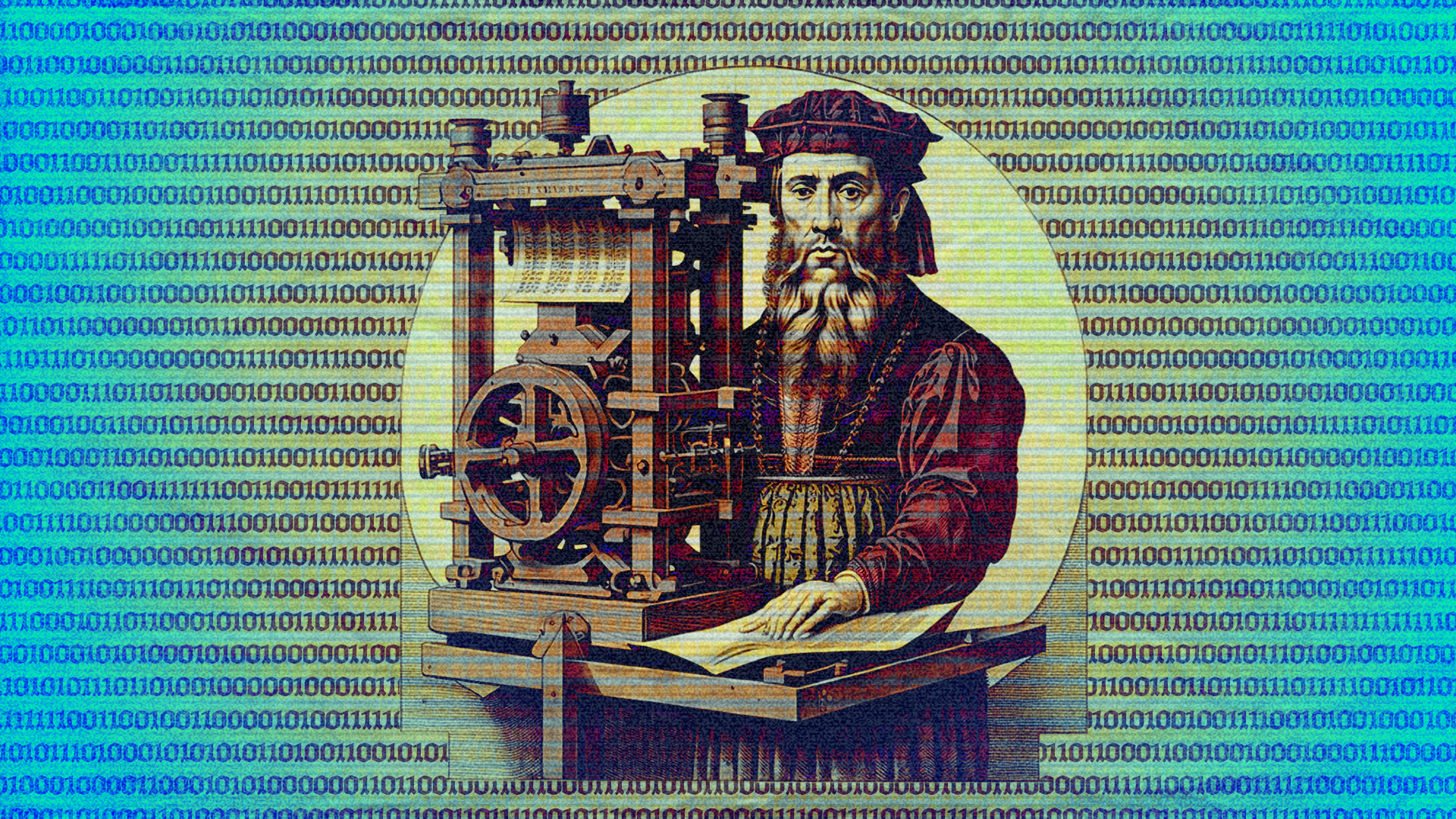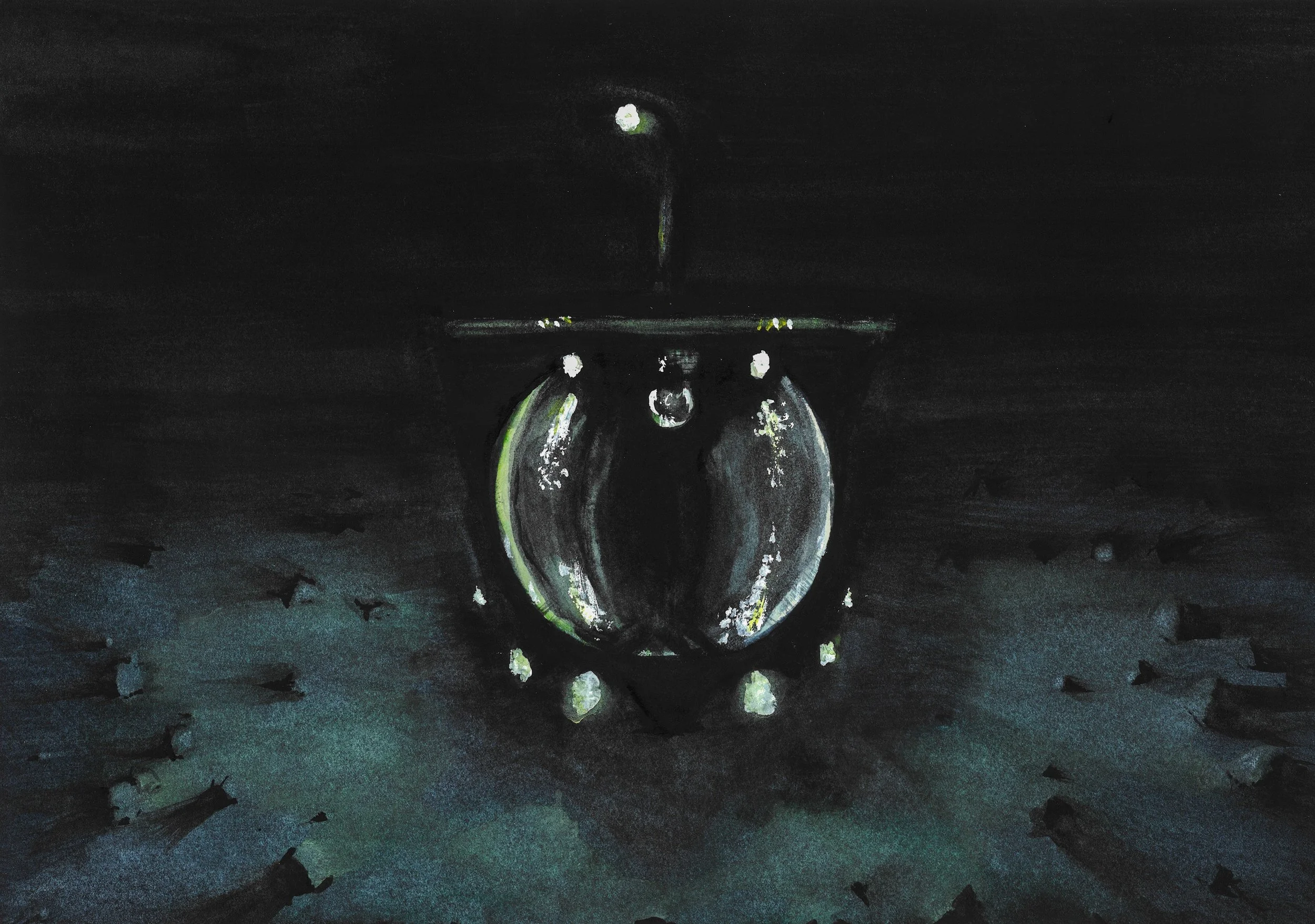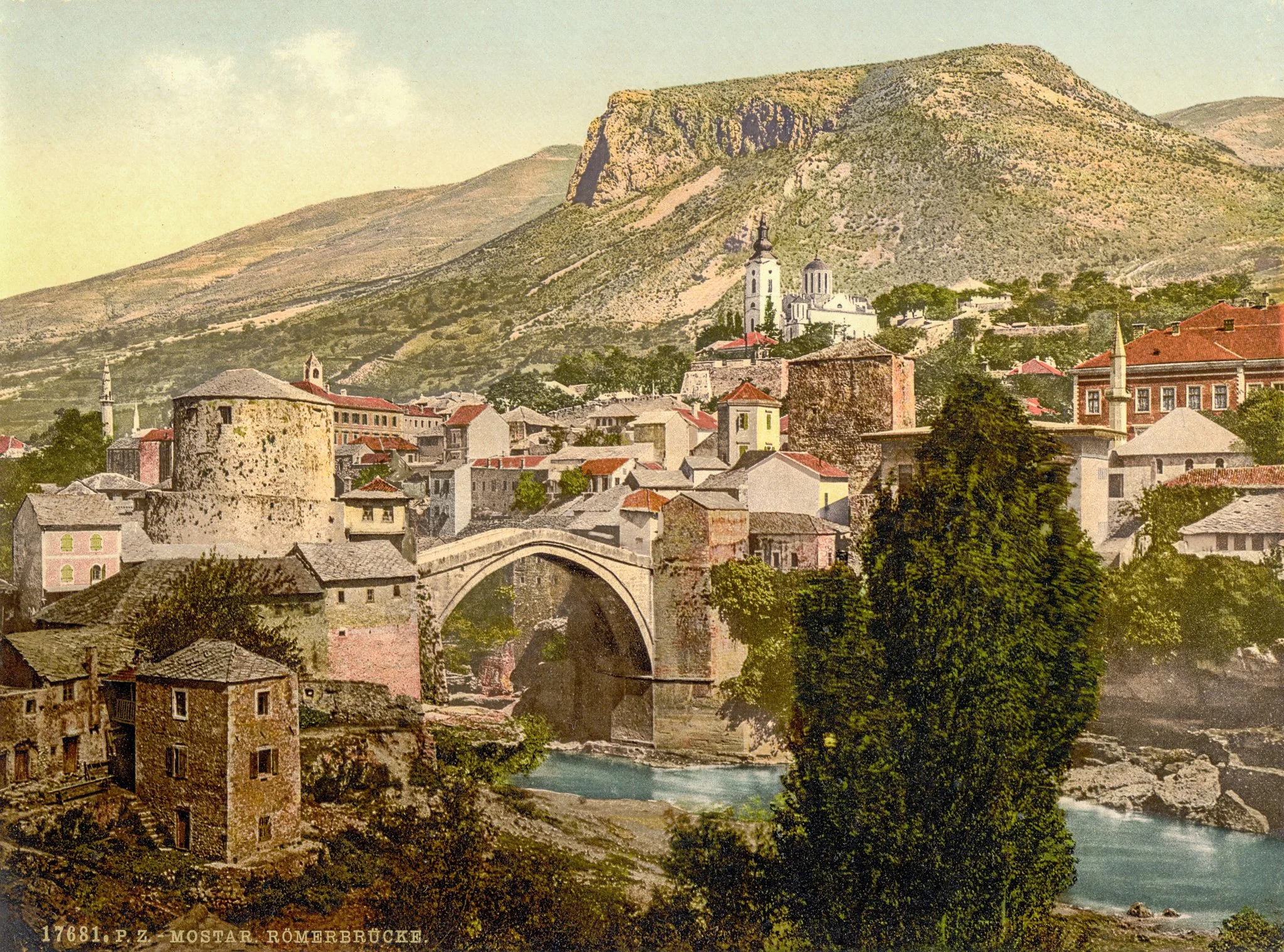Is OpenAI the Gutenberg of the Twenty-First Century?
Movable type sparked revolutions and reshaped cultures — AI could be trained to do it all again
An AI rendering of Johannes Gutenberg at a machine intended to be a printing press. Generative AI often “hallucinates,” adding extra fingers in image generation or inventing facts and citations in text generation. Image credit: Gr.diana via Wikimedia Commons (CC BY-SA 4.0), edits by Rachel Lense for The Science Writer
by Mark Kraus
February 21, 2024
In 1793, when Marie Antoinette stood on the wooden deck of the guillotine before a frenzied crowd of French revolutionaries, she may have cursed the newspaper L’Ami du Peuple. For years, it and other papers had produced unflattering depictions of her as an extravagant and disconnected queen. Printed media had shifted perceptions of the monarchy, its leaders, and their grip on power. Led by a new generation of thinkers and satirists, France’s press produced dozens of newspapers and periodicals leading up to the country’s revolution. In the American colonies, pamphlets like Thomas Paine’s Common Sense planted seeds of dissent. The spread and automation of the printing process meant that information could be produced faster than a regime could silence it.
The printing press and the movable type process, invented 300 years earlier by Johannes Gutenberg, heralded in an age of literacy. The press was used to spread new ideas, leading in part to the cultural rise of arts and sciences, the Renaissance, and modern democracy. Its automation laid the groundwork for the computer, which eventually led to the internet, disseminating both ideas and misinformation across the globe. Now, artificial intelligence (AI) and large language models (LLMs), like OpenAI’s ChatGPT, have shown that algorithms can be used to generate content, including the news and information that shapes our culture and perspectives, raising concerns about our AI-infused future.
Ed Shunney, Museum Press Curator at the South County Museum in Narragansett, Rhode Island, works to maintain a collection of a dozen working presses from different time periods. He is an expert on the moveable type process and explained that Gutenberg did not invent the press itself: “What he did come up with, which is very significant, was the method to make the individual letters.” An alloy of lead, tin, and antimony made it easier to cast detailed characters into movable blocks of type. To make a print, individual metal letters were arranged onto the bed of the press, securely fastened, and covered in ink. An imprint of the set letter type could then be transferred to a medium, like paper or vellum, by turning a large wooden screw. A wooden plate, or platen, was used to apply hundreds of pounds of pressure against the bed. The print would be removed, and more ink would be added. The repeated process could produce multiple pamphlets, posters, or pages of a book.
“There really weren’t any printed books to speak of before that in Europe,” explained Shunney. Before movable type, every manuscript was copied by hand. A Benedictine monk would spend years copying one Bible in a scriptorium by candlelight, which would often end up as the prized possession of a small town’s church. Gutenberg, by contrast, printed close to 180 complete Bibles in his workshop alone.
In 2019, researchers from MIT published a paper exploring how the printed word affected culture soon after its invention. The team used a data set of nearly 40,000 historical biographies to examine how the introduction of printed media biased cultural records. “All of the cities in Europe after 1450 participated in a natural experiment,” said César Hidalgo, one of the authors of the paper. They focused on Mainz, Germany, where Gutenberg built his first press. “We ran a model that would predict which year a city would adopt printing,” he explained. The closer a city was to Mainz, the sooner it adopted printing, and the more likely it would be the birthplace of a prominent artist or scientist. The research team concluded the press had a causal effect on culture, meaning that, with every new city using the press, the relevance of its authors increased. This was a shift of influence from clergy and royals, who had guarded knowledge for thousands of years, to writers, scientists, and philosophers. It also showed that the printing press itself could be the medium of influence, not just the words it printed.
By the time of the French Revolution, the printing press and movable type had saturated Europe. The words they produced rapidly changed perceptions, and “suddenly there was an explosive outbreak of opinion and debate, virtually all of it carried out through pamphlets and a brand-new, highly partial press,” wrote Richard Bernstein in the New York Times article “How the Storming of the Bastille Liberated the Printing Press, Too.” Bernstein made the case that revolutionaries like Mirabeau or Robespierre might be more accurately noted as “pamphleteers and journalists.” In the piece, Bernstein quoted Princeton historian Robert Darnton as saying, “without the [printing] press, the revolution was impossible.”
Two hundred years later, people used the internet to digitize the spread of information, allowing anyone with a connection to instantly share their opinions online. Social media sites like Twitter and Facebook promised a brave new world that would bring communities together and democratize public debate. But like the “highly partial” press of revolutionary France, social media produced polarized echo chambers. Political influencers soon learned that public debate could be harnessed to motivate voters. A decade after the launch of Facebook, a number of razor-thin elections around the world were feverishly debated online. Analysis showed that heavy investment in social media influence strategies may have tipped the scales by targeting disillusioned voters. Once again, the spread of misinformation played a key role in disrupting the political landscape. Like the pamphleteers before them, social media influencers and provocateurs used a new media platform to disrupt the status quo.
Generative AI tools like OpenAI’s ChatGPT use large language models, or LLMs, to create content. Image credit: Rachel Lense for The Science Writer
AI tools, like ChatGPT, are now being used to write persuasive content — potentially disrupting politics and culture. AI-powered bots, developed to spread targeted content, could distribute misinformation across a worldwide network of computers and phones. Without guardrails, an AI designed to establish a social media presence might be used as a divisive opinion maker. A “Black Mirror”–esque scenario where a public, charmed by a persuasion-trained AI influencer, helps the algorithm to run for office by changing their country’s constitution, might be more than science fiction.
“It will not be surprising to me if [people] elect an algorithm to rule,” said Mayada Oudah, a researcher in AI, social sciences, and human-robot interactions at NYU Abu Dhabi. “This is what Alan Turing was so worried about.” Oudah’s research focuses on how “a society of humans and intelligent machines” might interface. A future where we interact with AI on a daily basis “would require cooperation to thrive,” she said. “We’ll have to find a way to coexist.”
In her 2018 paper “How AI Wins Friends and Influences People in Repeated Games with Cheap Talk,” Oudah explored ways that computer algorithms could use persuasion to cooperate with or manipulate humans. Her team showed how AI performed in social dilemma games, like prisoner’s dilemma, where getting others to cooperate is the goal. Algorithms that used tactics like “cheap talk,” or social niceties and exchanges not directly related to the game’s outcome, performed better. An AI programmed to use tactics from Dale Carnegie’s famous book might “win friends,” by asking first about an opponent’s children and also use that same persuasiveness to influence a person’s decisions.
Despite the many promises of AI, scenarios like this have bolstered the chorus of voices calling for its regulation. As with the spread of new ideas through printed media, people may use AI to gain influence through the mass distribution of its content. A particularly persuasive LLM might one day be listed among other influential AIs — the program’s celebrity status up there with the biggest names in the Gutenberg Bible. More worrying, it may end up synonymous with figures like Robespierre, who used the press to stir up extremism, division, and bloodshed during France’s Reign of Terror.
Reflecting on the impact of the printing press, Hidalgo shared a recent discovery: Marie Antoinette may have never actually said, “Let them eat cake.” The saying was likely an “effective misinformation campaign” spread and distributed by France’s highly partial press. In the long arc of history, Antoinette may become a sympathetic character. Her monarchy ended not by her aloof words, but by the pressure of metal type against paper. An AI trained as a digital pamphleteer could do the same — upend our democracies and place those who try to stop it at the steps of its own digital guillotine.
Mark Kraus
Mark Kraus is a science, technology, and design writer and creative director. He is interested in telling stories about information — its emergence, the systems that define it, and its effects. Currently, he is pursuing his master's in science writing at Johns Hopkins University. He lives near the ocean with his wife, two dogs, and 2-year-old daughter.
Senior Editor: William Kucinski
Art Editors: Rachel Lense & Kieran Tuan
Copy Editor: Christopher Graber









